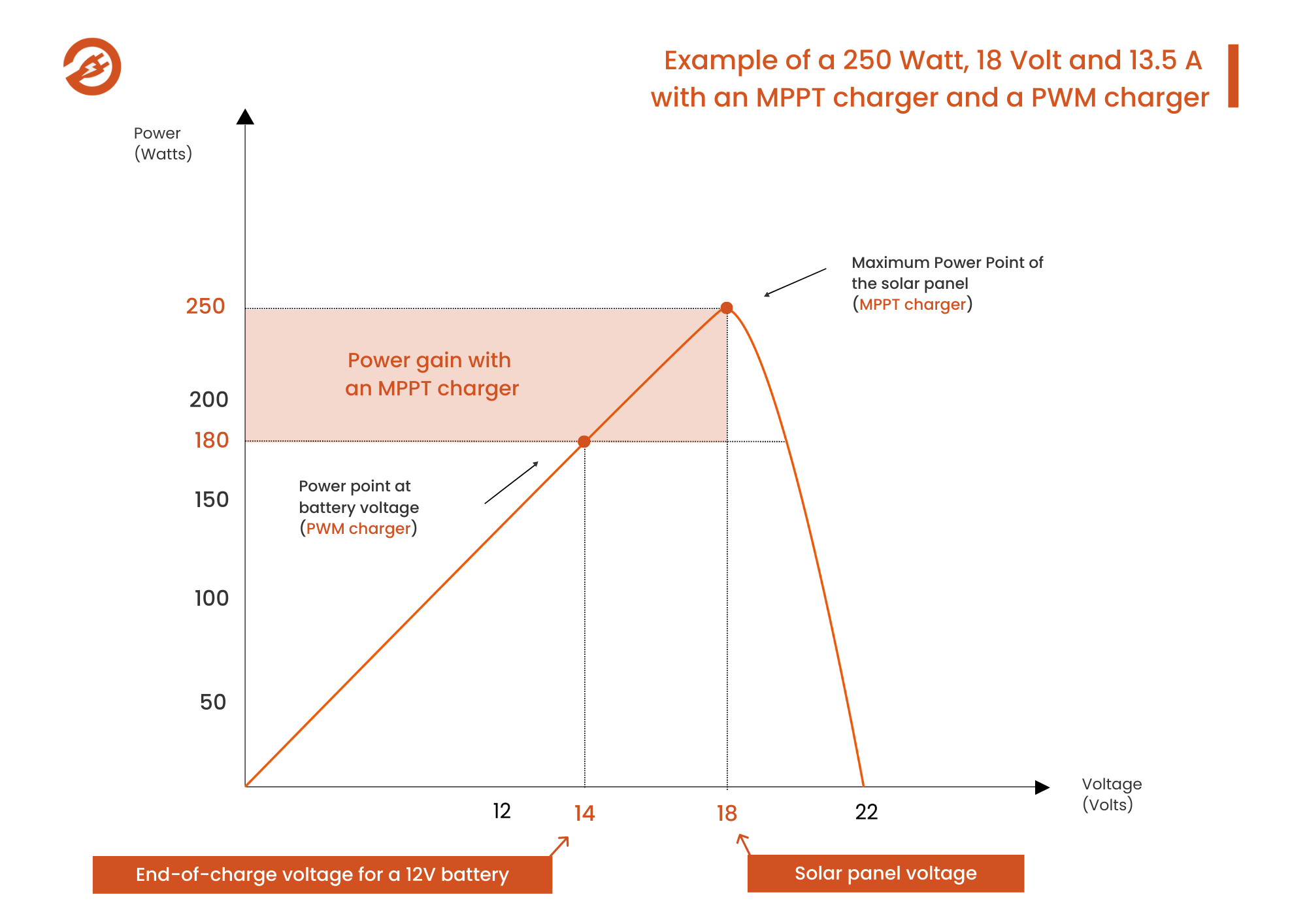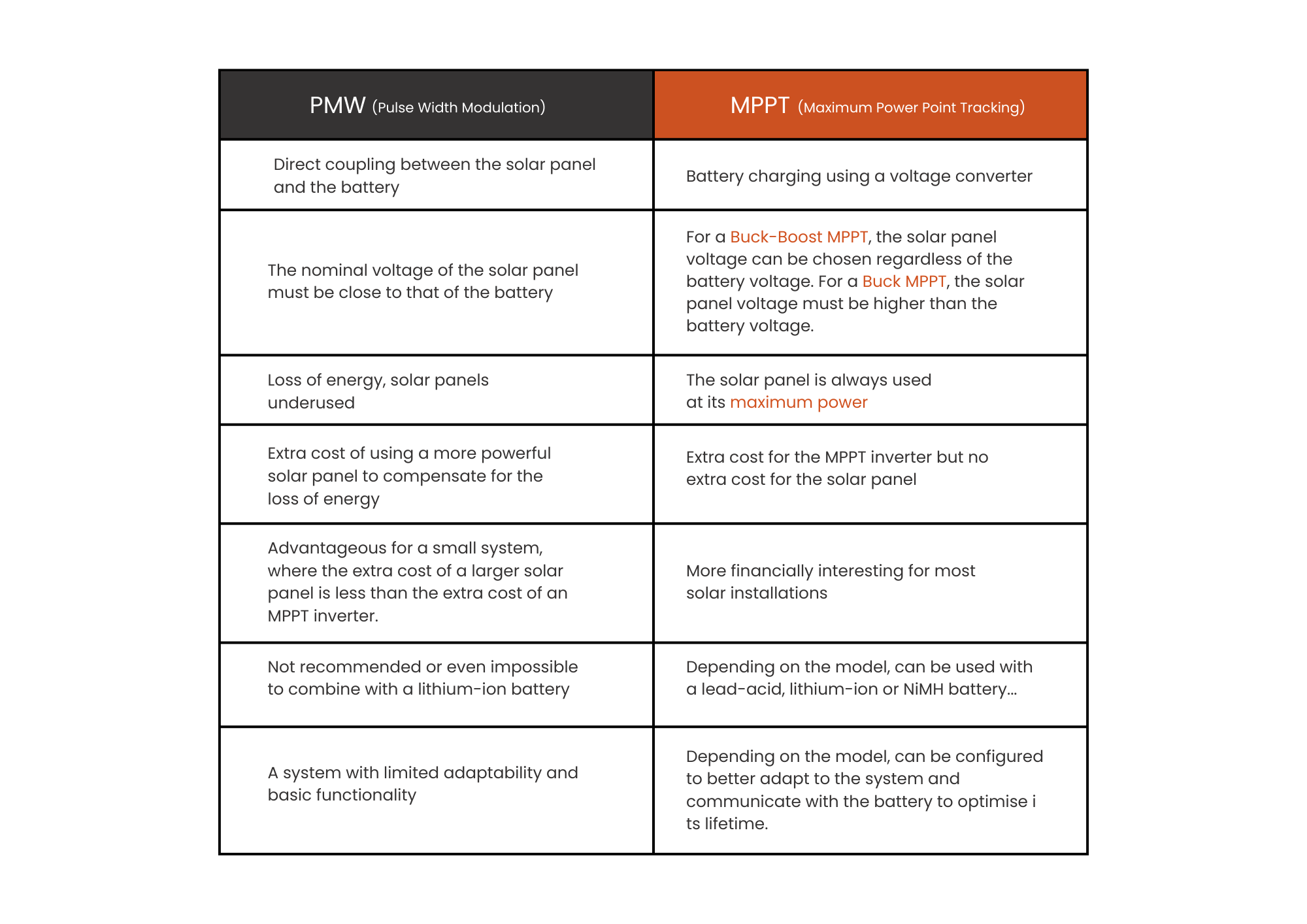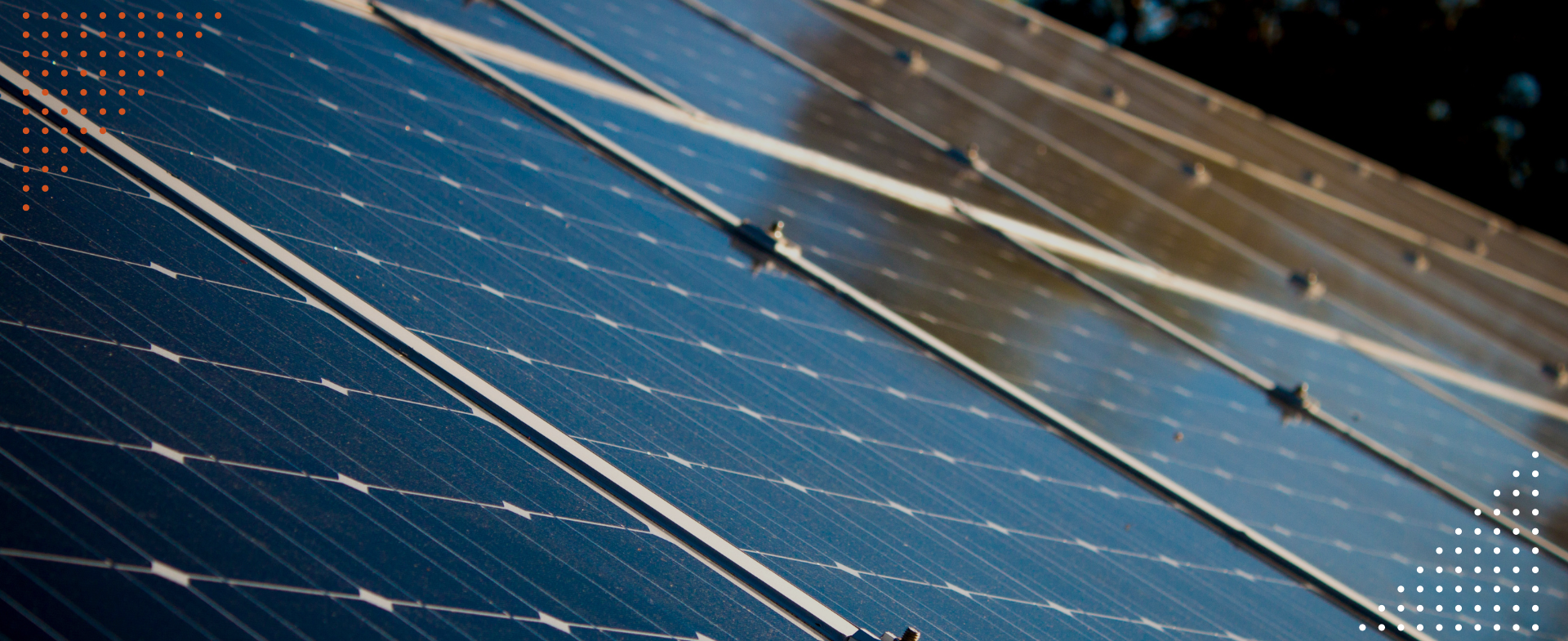Solar charge controller is essential for optimising battery charging from photovoltaic panels. This charge controller has become increasingly popular with the growth of solar energy worldwide, and help to guarantee safety and performance when setting up an off-grid solar system.
Two types of solar charge controller are generally used to recharge a battery using solar energy: PWM and MPPT.
Each has its own specific characteristics, which we will describe in detail in this article.
In this article, you’ll find the key points to remember about these two solutions.
Definition: what is a solar charge controller?
A solar charge controller is an energy converter that connects a battery to one or more photovoltaic panels. It monitors and regulates the energy stored in the battery and produced by the panels to prevent under- or overcharging.
Solar charge controllers can be classified using two criteria:
- According to their charging voltage and current: Solar chargers can be differentiated according to their ability to handle a maximum input voltage (V) and a maximum charging current (A). These parameters can be used to determine the number of solar panels that can be connected to the charge controller without risking damage to the system.For example, 12 to 48V solutions (up to 50A) can be used in converted vehicles (motor homes, professional vehicles, etc.) or boats. Solar chargers above 48V (or above 50A) are better suited to more powerful off-grid systems.
- According to how they work: This classification distinguishes between two types of regulator: the PWM (Pulse Width Modulation) regulator and the MPPT (Maximum Power Point Tracking) regulator, which are the most widely used solutions on the market today.
PWM and MPPT solar charge controllers: what are the differences?
PWM controller
Directly connected to the solar panel and the battery, the PWM – Pulse Width Modulation – reduces the average current of the solar panel to adapt it to the battery.
This type of regulator uses an electronic switch controlled by PWM (Pulse Width Modulation) to control the average charging current of the battery. The switch opens and closes at a fixed frequency. The opening and closing times of this switch are adjusted to maintain an average current acceptable to the battery. Finally, the switch is kept open when the battery is charged.
Although these regulators are very economical, they tend to reduce the power of the solar panel and its efficiency. In fact, when the solar panel voltage is adjusted to match that of the battery, this has the effect of deviating the panel voltage from its optimum operating value.
The MPPT controller: a reliable, high-performance option
As its name suggests, Maximum Power Point Tracking is a DC/DC converter used to ensure that the solar panel operates at its maximum power point, i.e. the optimum voltage for maximum output power. MPPT relies on input voltage regulation to maintain the optimum voltage, so it recovers the maximum energy supplied by a solar panel and then converts it to recharge a battery.
This is an important feature, as it enables the battery to be recharged efficiently, with energy savings, particularly during periods of low sunlight. Given that the voltage and current of a photovoltaic panel fluctuate with the amount of sunlight during the day, this has an impact on the maximum power supplied by the PV array, and therefore on the recharging current of the solar battery.
The role of the MPPT regulator is to compensate for the variation in electricity production by continuously tracking the point of maximum power (best voltage and current combination) delivered by the photovoltaic panel to rapidly recharge the solar battery.
More advanced than the PWM regulator, the MPPT solar charger is intelligent and can increase the amount of energy drawn from the photovoltaic panel by more than 30% on average.

Overview of the differences between PWM and MPPT

With the increasing use of renewable energies, particularly solar energy, it’s important to select a high-performance regulator that optimises the conversion of energy from a solar panel to a battery.
For some manufacturers of converted vehicles (motorhomes, boats, commercial vehicles, etc.) and specialist distributors, the challenge is to find innovative equipment that meets their needs and technical constraints. As an electronics expert, Selfenergy supports these players with tailor-made solar charge controllers. Contact our experts.
